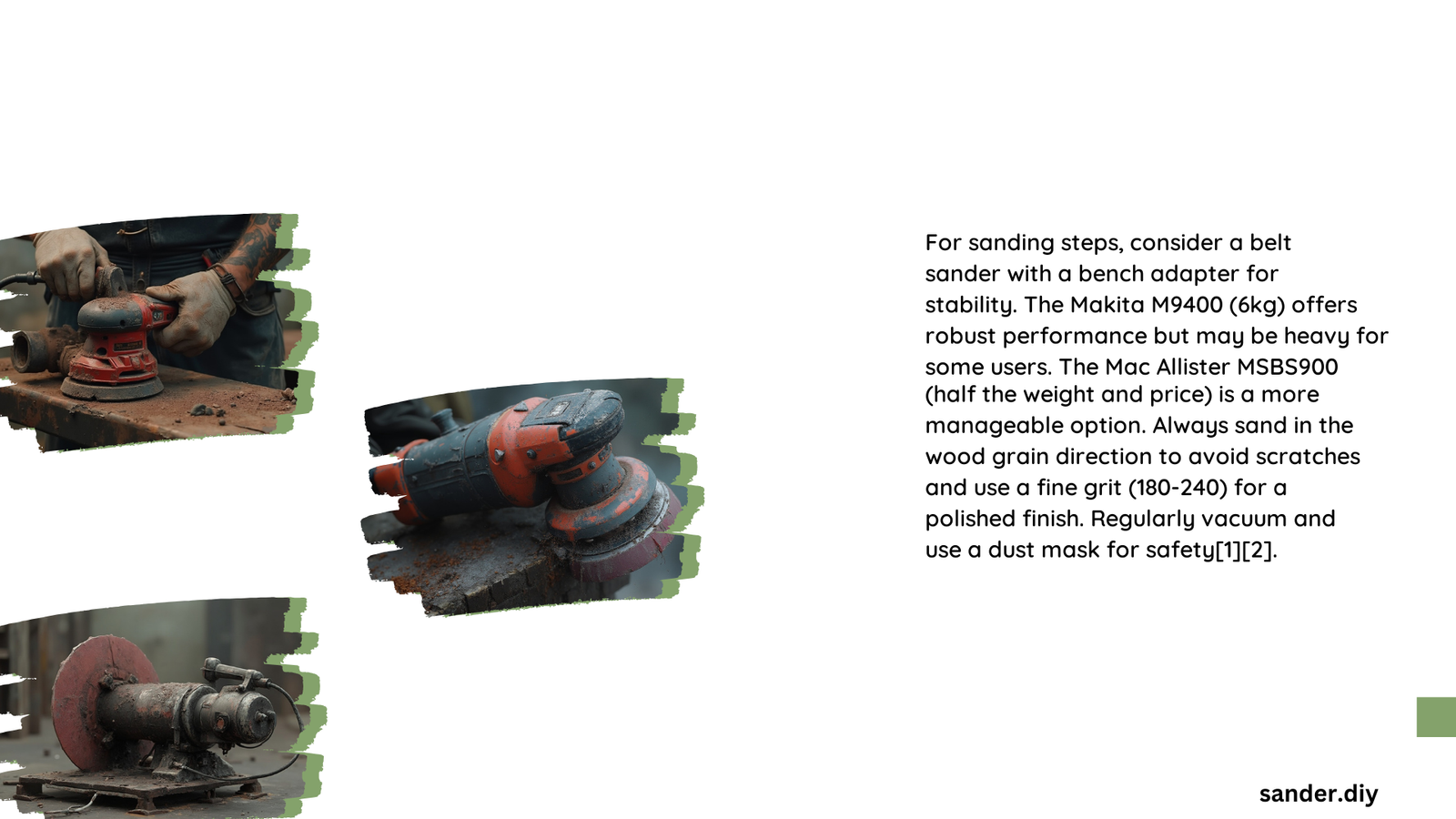Sanding wooden steps requires precision, skill, and the right belt sander. Professional woodworkers and DIY enthusiasts understand that selecting the appropriate belt sander can transform worn, rough steps into smooth, elegant surfaces. This comprehensive guide explores critical techniques, specifications, and strategies for achieving exceptional results when using a belt sander on wooden steps.
What Makes a Belt Sander Ideal for Steps?
Key Specifications for Step Sanding
| Specification | Recommended Range | Rationale |
|---|---|---|
| Belt Size | 3 x 21 or 4 x 24 inches | Provides maneuverability and coverage |
| Motor Power | 8-12 amps | Ensures consistent performance |
| Weight | 3-6 kg | Enables comfortable handling |
How to Choose the Right Belt Sander?
When selecting a belt sander for steps, consider these critical factors:
- Power and Performance
- Look for models with variable speed control
- Prioritize sanders with smooth tracking mechanisms
-
Ensure adequate amperage for consistent wood removal
-
Ergonomic Design
- Select lightweight models
- Check handle comfort and grip
- Evaluate dust collection capabilities
What Techniques Ensure Professional Sanding?
Grit Progression Strategy
- Coarse Grit (60-80): Initial surface preparation
- Medium Grit (100-120): Smoothing rough areas
- Fine Grit (150-220): Final polishing and refinement
How to Manage Challenging Surfaces?
Addressing Common Sanding Challenges
- Uneven Surfaces
- Use adjustable tracking mechanisms
- Employ hand sanding for intricate areas
-
Maintain consistent pressure and movement
-
Dust Management
- Invest in integrated dust collection systems
- Use respiratory protection
- Work in well-ventilated spaces
What Safety Precautions Should You Follow?
- Wear safety glasses
- Use dust masks
- Secure work area
- Maintain stable footing
- Disconnect power when changing belts
Cost Considerations
Belt Sander Investment Breakdown
| Expense Category | Estimated Cost Range |
|---|---|
| Basic Belt Sander | $65 – $260 |
| Replacement Belts | $10 – $20 per belt |
| Safety Equipment | $20 – $50 |
Pro Tips for Exceptional Results
- Always sand with the wood grain
- Move sander continuously to prevent gouging
- Test on scrap wood before working on steps
- Maintain consistent angle and pressure
- Clean sander after each use
Conclusion

Mastering belt sander techniques for steps requires practice, patience, and the right equipment. By understanding specifications, employing proper techniques, and prioritizing safety, you can transform wooden steps from worn to wonderful.
